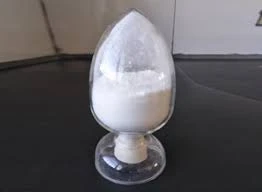Nonionic Polyacrylamide An Overview of Its Applications and Benefits
Nonionic polyacrylamide (NPAM) is a water-soluble polymer derived from the polymerization of acrylamide monomers. This versatile compound has garnered significant attention in various industries due to its ability to interact with numerous substances and its unique properties. Unlike ionic polyacrylamides, which carry charged functional groups, nonionic polyacrylamide possesses no such charges, resulting in different chemical behavior and functionality.
Properties of Nonionic Polyacrylamide
The primary characteristic of nonionic polyacrylamide is its neutral charge. This neutrality leads to reduced electrostatic interactions with ions and other charged species in solution. As a result, NPAM exhibits excellent solubility in water and can form stable solutions, which are essential for many applications. Additionally, the polymer can be produced in various molecular weights, ranging from low to high, allowing users to tailor its properties for specific purposes.
One critical feature of NPAM is its ability to thicken solutions and enhance viscosity without significantly affecting the polymer's mechanical stability. This viscosity modulation is vital in sectors such as construction, agriculture, and wastewater treatment, where managing fluid characteristics is crucial.
Applications in Various Industries
1. Water Treatment Nonionic polyacrylamide is widely used in waste and water treatment processes. It serves as a flocculant, helping to aggregate suspended particles and facilitate their removal. NPAM can effectively bind with sediments, making it easier to collect and dispose of them, thus improving the efficiency of water purification systems.
2. Agriculture In agriculture, NPAM plays a pivotal role in soil conditioning and erosion control. When applied to soil, it enhances water retention, reduces erosion, and improves the soil's texture. Farmers utilize NPAM to create a more favorable environment for plant growth, especially in arid regions where water scarcity is a concern.
nonionic polyacrylamide

3. Oil and Gas Industry The oil and gas industry leverages nonionic polyacrylamide in enhanced oil recovery operations. By reducing the viscosity of water injected into reservoirs, NPAM helps mobilize oil trapped in porous rock formations. This application contributes to increasing the efficiency of oil extraction processes.
4. Pulp and Paper Industry In the pulp and paper sector, NPAM is employed as a retention aid and drainability enhancer. It helps retain fine particles within the pulp slurry, thereby improving the quality of the final paper product. Additionally, it can increase the drainage rates, which speeds up the manufacturing process.
5. Cosmetics and Personal Care The cosmetic industry utilizes nonionic polyacrylamide in formulations as a thickening agent and emulsifier. Its capability to form gels and improve the texture of creams and lotions makes it a valuable ingredient in various beauty products.
Environmental Considerations
As environmental awareness grows, the sustainability of materials becomes increasingly important. Nonionic polyacrylamide, particularly when formulated for specific applications, often has a favorable environmental profile. Unlike some synthetic polymers that can persist in the environment, NPAM is typically biodegradable under the right conditions, mitigating concerns related to long-term ecological impacts.
Conclusion
Nonionic polyacrylamide has proven to be a highly adaptable and beneficial polymer across multiple industries, thanks to its unique properties and various applications. From enhancing water treatment processes to improving agricultural practices and contributing to industrial efficiencies, NPAM continues to make a significant impact. As research advances and the demand for sustainable solutions grows, the roles and formulations of nonionic polyacrylamide are likely to expand further, positioning it as an essential component in future innovations. The ongoing exploration of its capabilities will undoubtedly open new avenues for its application, contributing to both economic and environmental sustainability.

